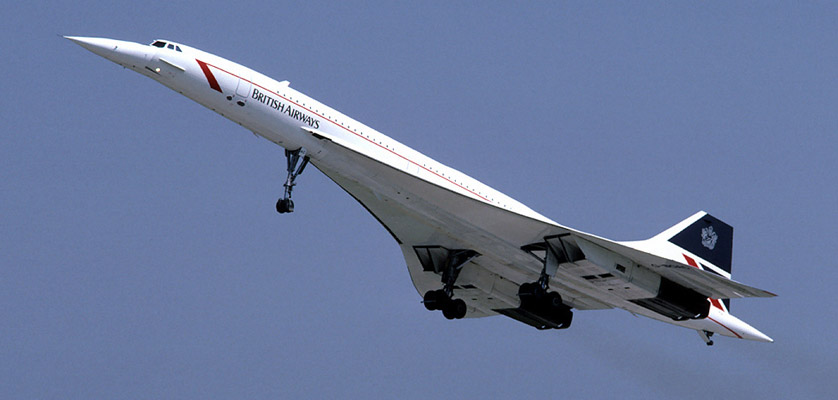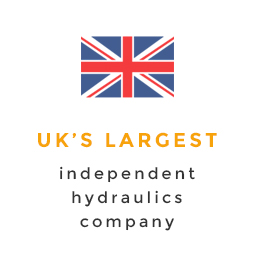Happy Birthday, Concorde!
For many people, the golden age of air travel began 50 years ago, when the supersonic jet, Concorde, took its first flight. In a programme that cost £1.3 billion, Concorde was jointly developed by the British Aircraft Corporation and Sud Aviation (later Aérospatiale) under an Anglo-French treaty.
Primarily used by British Airways and Air France, flying regular transatlantic flights, Concorde's first flight took place on 2nd March 1969.
The main routes were from Heathrow Airport in London and Charles de Gaulle Airport in Paris to John F Kennedy International Airport in New York, Grantley Adams International Airport in Barbados and Washington Dulles International Airport in Virginia. It flew the routes in less than half the time of other aircraft.
Famous for its supersonic boom (caused because it was travelling faster than sound), it travelled at 2,179 km per hour and had a maximum cruise altitude of 18,300 metres.

© Eduard Marmet / CC BY-SA 3.0
Famous passengers
As the 50th anniversary of the first flight looms, some of the aircraft's rich and famous passengers have remembered the joy they felt at travelling by supersonic jet. Joan Collins famously described it as a "travesty of civilisation" when Concorde took its last flight in 2003.
The fare was £8,275 at the time and passengers could enjoy sipping Krug, while travelling at more than twice the speed of sound.
Diana, Princess of Wales, was another famous fan of Concorde, boarding at Heathrow to travel to New York - in particular when she was attending the charity auction of her gowns.
Pop icon Madonna was also a fan of Concorde, as was actor Robert Redford, the Duchess of York, Paul McCartney, Elton John and Phil Collins. The Queen Mother had also flown on Concorde - and reportedly once took the controls during a flight to New York!
End of an era
Unfortunately, after more than three decades of luxury travel, Concorde flights eventually ended when British Airways and Air France announced it was no longer commercially viable. The aircraft no longer made a profit and BA revealed passenger revenue had been "falling steadily", while maintenance costs had been rising.
Now, 16 years after it last took to the skies, Concorde's distinctive drooping nose will be back in action for its 50th anniversary. Since its final flight, Alpha Foxtrot (the last Concorde model to fly) has been located at the Aerospace Bristol Museum. Visitors have been able to board it and get an idea of the luxury of the plane.
Its famous "droop nose" was designed for improved visibility during take-off and landing. The feature was operated by hydraulics. However, the nose was disabled after Concorde was decommissioned and it was drained of hydraulic fuel.
Hydraulic nose
Now, conservators and volunteers are working together to reactivate the famous cone. They are hoping it will be fully functional by 9th April 2019 - the 50th anniversary of Concorde's first British flight.
Concorde's very long pointed nose was streamlined to reduce drag and improve aerodynamic efficiency, but this prevented the pilots from seeing correctly during take-off and landing, so the unique solution was found.
Concorde's drooping nose could be configured differently during the various stages of a flight. The nose and visor mechanism would be hydraulically controlled from the jet's green hydraulic system. Its movement was initiated from a locking lever on the cockpit panel.
The "traffic lights" system provided the nose's status during the flight, along with the electro-magnetic indicator. A back up control was available on the centre pedestal that allowed the nose and visor to be lowered using the yellow hydraulic system, should the green system fail.
The visor would be hydraulically retracted, but the nose would only be unlocked hydraulically, with its downward movement occurring under gravity, or aerodynamic forces.
A third manual up lock release system allowed the nose and visor to free fall to the five degrees position, should the yellow system also fail.
In its heyday, Concorde transported passengers between London and New York in just under three and a half hours, becoming a symbol of the ultimate luxury travel.
Phoenix Hydraulics is one of the largest independent hydraulics companies in the UK. Established for more than 35 years, we provide a full range of engineering solutions across a broad range of industry sectors. Contact us on 01733 234800 for information on our range of products and services


